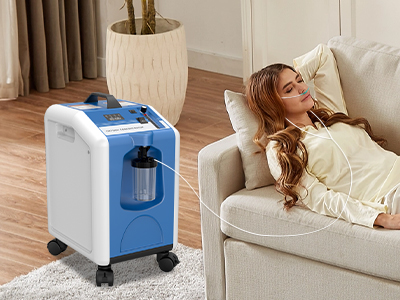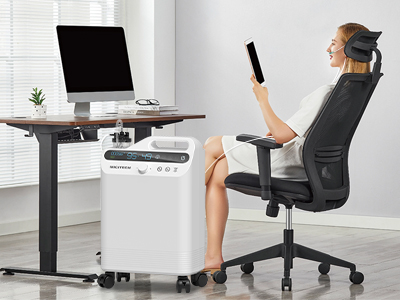28 Apr 2025
Life often serves up changes with the subtlety of a sledgehammer. Receiving the news that home oxygen therapy will be part of your future can feel daunting. A thousand questions clamor for attention. Yet, buried within that initial uncertainty lies an extraordinary opportunity—to live with renewed energy and resilience. Home oxygen therapy is not a life sentence; it is a lifeline, a bridge to more vibrant days and greater autonomy. Embracing it marks the beginning of a powerful new chapter.

Understanding Your Equipment: Meet Your New Best Friend
First things first: get acquainted with your new sidekick. Oxygen delivery systems come in a dazzling array of formats, from stationary concentrators to portable tanks that resemble something out of a sci-fi flick. Knowing the nuances between continuous flow and pulse dose settings can feel like learning a new dialect, but mastery brings confidence.
Essential components like nasal cannulas, humidifiers, and filters require daily checks and gentle TLC. Equipment manuals—though about as riveting as instruction leaflets for flat-pack furniture—become your trusted grimoires. A little diligence today spares you major headaches tomorrow.
Creating a Safe Sanctuary: Oxygen-Friendly Home Modifications
Your home must now moonlight as a haven of caution. Oxygen, while life-giving, plays poorly with open flames and sparks. Smoking indoors is henceforth forbidden—a decree as serious as it sounds. Scented candles, wood-burning fireplaces, and even oil-based space heaters must be relegated to history.
Rearranging furniture to create clear pathways minimizes tubing snafus and tripping hazards. Fire extinguishers should nestle in easily reachable nooks. It's less about living in fear and more about living intelligently, with a home fine-tuned for flourishing.
Mastering Mobility: Moving Freely with Oxygen Support
Nobody wants to feel tethered like a dirigible at a county fair. Thankfully, modern portable concentrators are lighter, sleeker, and quieter than ever, empowering mobility without the bulk of old-school setups. Strategically placed hooks, tubing management reels, and over-the-shoulder carrying cases turn potential chaos into smooth choreography.
Think of tubing as an elegant, invisible extension of yourself—there but hardly a hindrance. Short excursions to the mailbox, leisurely strolls around the neighborhood, and even extended outings become completely plausible with a little preparation and panache.
Social Life and Oxygen Therapy: Thriving Without Apology
The temptation to turn into a hermit at the mere thought of explaining oxygen equipment to friends and strangers is real. Resist it. Oxygen therapy is not an embarrassment—it’s a testament to resilience.
Prepare a few light-hearted explanations for curious onlookers. Attend social gatherings with confidence, selecting venues that accommodate your equipment needs. Air travel? Absolutely possible. Airlines often allow portable oxygen concentrators with advance notice. In short, life outside your walls remains wonderfully within reach.

Fitness and Physical Activity: Breathing Life Into Movement
Exercise might seem counterintuitive when breath feels scarce, but physical activity is critical. Tailored workouts—such as chair yoga, tai chi, or leisurely aquatic therapy—strengthen endurance and improve oxygen efficiency.
Consult with respiratory therapists or physiatrists to craft a regimen that honors your body’s new rhythm. Short bursts of exertion, punctuated by recovery periods, often yield the best results. Each step forward, however small, is a celebration of vitality reclaimed.
Mental and Emotional Well-being: Navigating the Inner Terrain
The emotional labyrinth of adapting to home oxygen therapy cannot be ignored. Moments of grief, frustration, and isolation are natural visitors. However, they need not overstay their welcome.
Journaling, mindfulness practices, and breathing exercises—even meta-ironic ones—can soothe the psyche. Connection remains the antidote to despair. Support groups, whether online or in-person, offer camaraderie with others navigating the same landscape. Professional counseling serves as another sturdy scaffold when emotional architecture feels wobbly.
Maintenance Matters: Keeping Your Oxygen Equipment Shipshape
Neglecting oxygen equipment is like ignoring a ticking clock in a room full of dynamite. Weekly cleanings of cannulas, humidifier bottles, and exterior casings ensure peak performance and longevity.
Filters should be inspected with the scrutiny of a jeweler appraising rare gems. Always keep an ear out for unusual noises—strange humming, rattling, or buzzing can signal mechanical malaise. Preventative maintenance isn’t glamorous, but it is profoundly empowering.
Planning for Emergencies: Preparing for the Unexpected
When storms rage or the power grid hiccups, oxygen users must be poised like seasoned adventurers. Backup oxygen cylinders or portable concentrators with rechargeable batteries are not luxuries—they are non-negotiables.
Assemble an emergency kit stocked with essentials: extra tubing, battery packs, a printed list of emergency contacts, and a laminated sheet detailing your oxygen prescription. In moments of upheaval, preparation transforms chaos into calm resolve.
Conclusion: A Life Rich with Possibility
Home oxygen therapy, becomes a vessel of vitality when approached with curiosity, courage, and creativity. Life’s richness need not be diminished—it simply demands a recalibration of expectations and habits.
Through adaptation comes empowerment. Through vigilance comes liberation. With each carefully planned step, life expands again, offering new adventures, deeper connections, and a profound appreciation for every precious breath.
Keywords: oxygen therapy
Originally published 28 Apr 2025, updated 28 Apr 2025.